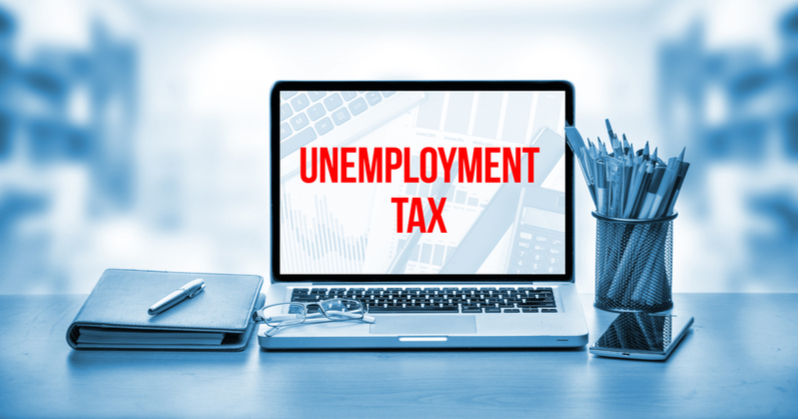So, your client’s an employer, eh? If so, they need to familiarize themselves with all-things unemployment. You and your clients should be up-to-date on paying unemployment tax, handling claims and dealing with fraud.
Unemployment tax, claims and fraud—oh my!
Putting together a welcome packet for your clients? Fielding questions? Looking for info for your own firm?
Regardless of your reason for reading this article, here’s what to know about the business side of unemployment insurance.
1. Paying the tax
Employers are responsible for paying both federal and state unemployment taxes for each employee they have. These tax rates are a percentage of an employee’s wages, up to a certain amount.
Although the federal unemployment tax (FUTA) rate is a standard 6% on the first $7,000 each employee earns annually, your clients might qualify for a tax credit up to 5.4%. This tax credit can drop the FUTA tax rate down to as low as 0.6% per employee.
State unemployment tax (SUTA) rates and thresholds vary by state. Employers receive a tax rate based on their industry, experience, and number of unemployment claims from past employees.
Have a client with a multi-state employee? Make sure they understand which state to pay the tax to. Employers do not pay SUTA tax to more than one state for a multi-state employee. Instead, employers pay to the state that funds the employee’s unemployment benefits.
Federal and state unemployment taxes are typically employer-only taxes. However, there are a handful of states (Alaska, New Jersey, and Pennsylvania) that also require employee SUTA tax contributions.
Help guide your client through the ins and outs of remitting unemployment tax to the proper agencies, too. FUTA tax is typically due quarterly, but some employers with a quarterly tax liability of $500 or less can roll it over to the next quarter. SUTA tax remittance is generally quarterly as well, but you should check with your state to verify.
And where there are deposits, there is also reporting. Employers must report FUTA tax using Form 940, Employer’s Annual Federal Unemployment (FUTA) Tax Return, annually. And, employers need to report their SUTA tax liability to their state.
Want to streamline this process?
If you’re offering payroll services to your clients and aren’t doing so already, consider partnering with an online payroll software provider. The payroll software calculates your client’s unemployment tax liability so you don’t have to.
Don’t want to worry about paying or reporting unemployment taxes for your clients? Then opt for a full-service payroll to do the heavy lifting for you.
2. Handling claims
Paying unemployment taxes isn’t the end of the line for employers. There’s also the matter of handling unemployment claims. What happens when a former employee files for unemployment?
When a former employee files for unemployment benefits, their most recent employer receives a notice from the state. Employers can either accept a claim or contest it.
Examples of legitimate unemployment claims (i.e., accept) include:
- Layoffs due to lack of work or financial constraints
- Termination due to something the employer did wrong
Examples of illegitimate unemployment claims (i.e., contest) include:
- Firings for misconduct
- Quitting to take another job
- False information on the employee’s claim form
Employers should carefully review unemployment claim notices from their state to ensure they are legitimate. If you or your client feel the unemployment claim is inaccurate, respond to the state unemployment department as soon as possible.
Employers contesting unemployment claims need to back up their case through careful documentation (e.g., employee termination details). The state sends a determination letter when they reach a decision.
Your clients should understand that successful unemployment claims (i.e., the former employee starts receiving benefits) will likely result in a higher SUTA tax liability.
3. Dealing with fraud
Unfortunately, you or your client may encounter cases of unemployment fraud at some point. In fact, a whopping 35 - 40% of claims are fraudulent, particularly in the current economic climate.
Thankfully, employers who are on the lookout for unemployment fraud can identify cases—and take action before it impacts their business (and employees).
So, how can you and your clients catch fraud attempts red-handed? Employers who receive an unemployment claim notice from their state may have some questions if the employee is still employed at their business.
If you or your clients receive a state notice that a currently employed employee has filed, notify the employee immediately.
There are a number of other actions employers need to take to prevent the claim from being successful, including:
- Contesting the claim with the state (and gathering documents, like timecards or pay stubs, that show the employee is still employed)
- Reporting fraud to the state, along with the employee (not sure who to call? Check out the Department of Labor’s state directory)
- Keeping records throughout the process (e.g., copies of the state notice)
Employers should also encourage employees to file an identity theft report and contact the credit bureaus (e.g., Experian).
.png?width=150&height=63&name=TWRlogo-regmark_blueblack%20(1).png)
.png)










Do you have questions about this article? Email us and let us know > info@woodard.com
Comments: